2013
Type of resources
Available actions
Topics
Keywords
Contact for the resource
Provided by
Years
Formats
Representation types
Update frequencies
Service types
Scale
-
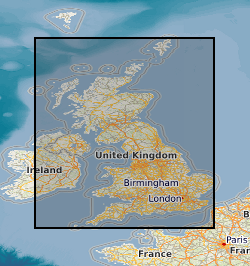
Data identifying landscape areas (shown as polygons) attributed with geological names and rock type descriptions. The scale of the data is 1:50 000 scale providing bedrock geology. Onshore coverage is provided for all of England, Wales, Scotland and the Isle of Man. Bedrock geology describes the main mass of solid rocks forming the earth's crust. Bedrock is present everywhere, whether exposed at surface in outcrops or concealed beneath superficial deposits or water bodies. The bedrock geology of Great Britain is very diverse and includes three broad classes based on their mode of origin: igneous, metamorphic and sedimentary. The data includes attribution to identify each rock type (in varying levels of detail) as described in the BGS Rock Classification Scheme (volumes 1-3 ). The bedrock has formed over long periods of geological time, from the Archean eon some 7500 million years ago, to the relatively young Pliocene, 58 million years ago. The age of the rocks is identified in the data through their BGS lexicon name (published for each deposit at the time of the original survey or subsequent digital data creation). For stratified rocks i.e. arranged in sequence, this will usually be of a lithostratigraphic type. Other rock types for example intrusive igneous bodies will be of a lithodemic type. More information on the formal naming of UK rocks is available in the BGS Lexicon of Named Rock Units. Geological names are based on the lithostratigraphic or lithodemic hierarchy. The lithostratigraphic scheme arranges rock bodies into units based on rock-type and geological time of formation. Where rock-types do not fit into the lithostratigraphic scheme, for example intrusive, deformed rocks subjected to heat and pressure resulting in new or changed rock types; then their classification is based on their rock-type or lithological composition, using visible features such as texture, structure, mineralogy. The data are available in vector format (containing the geometry of each feature linked to a database record describing their attributes) as ESRI shapefiles and are available under BGS data licence.
-
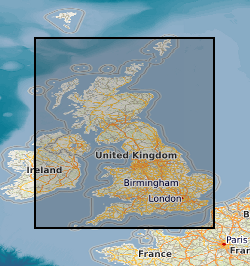
Data identifying landscape areas (shown as polygons) attributed with geological names and rock type descriptions. The scale of the data is 1:50 000 scale. Onshore coverage is provided for all of England, Wales, Scotland and the Isle of Man. Superficial deposits are the youngest geological deposits formed during the most recent period of geological time, the Quaternary, which extends back about 2.58 million years from the present. They lie on top of older deposits or rocks referred to as bedrock. Superficial deposits were laid down by various natural processes such as action by ice, water, wind and weathering. As such, the deposits are denoted by their BGS Lexicon name, which classifies them on the basis of mode of origin (lithogenesis) with names such as, 'glacial deposits', 'river terrace deposits' or 'blown sand'; or on the basis of their composition such as 'peat'. Most of these superficial deposits are unconsolidated sediments such as gravel, sand, silt and clay. The digital data includes attribution to identify each deposit type (in varying levels of detail) as described in the BGS Rock Classification Scheme (volume 4). The data are available in vector format (containing the geometry of each feature linked to a database record describing their attributes) as ESRI shapefiles and are available under BGS data licence.
-
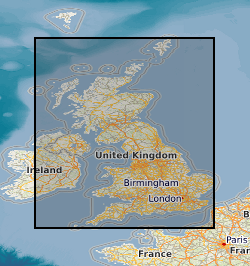
Data identifying landscape areas (shown as polygons) attributed with type of mass movement e.g. landslip. The scale of the data is 1:50 000 scale. Onshore coverage is provided for all of England, Wales, Scotland and the Isle of Man. Mass movement describes areas where deposits have moved down slope under gravity to form landslips. These landslips can affect bedrock, superficial or artificial ground. Mass movement deposits are described in the BGS Rock Classification Scheme Volume 4. However the data also includes foundered strata, where ground has collapsed due to subsidence (this is not described in the Rock Classification Scheme). Caution should be exercised with this data; historically BGS has not always recorded mass movement events and due to the dynamic nature of occurrence significant changes may have occurred since the data was released. The data are available in vector format (containing the geometry of each feature linked to a database record describing their attributes) as ESRI shapefiles and are available under BGS data licence.
-
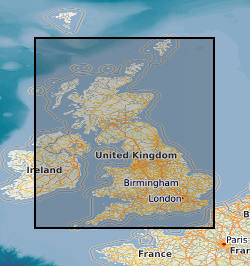
Linear features (shown as polylines) represent six classes of geological structural features e.g. faults, folds or landforms e.g. buried channels, glacial drainage channels at the ground or bedrock surface (beneath superficial deposits). Linear features are associated most closely with the bedrock theme either as an intrinsic part of it for example marine bands or affecting it in the case of faults. However landform elements are associated with both bedrock and superficial deposits. The linear features are organised into seven main categories: Alteration area indicating zones of change to the pre-existing rocks due to the application of heat and pressure that can occur round structural features such as faults and dykes. Fault where a body of bedrock has been fractured and displaced by a large scale process affecting the earth's crust. Fold where strata are bent or deformed resulting from changes or movement of the earth's surface creating heat and pressure to reshape and transform the original horizontal strata. Folds appear on all scales, in all rock types and from a variety of causes. Fossil horizons where prolific fossil assemblages occur and can be used to help establish the order in which deposits were laid down (stratigraphy). These horizons allow correlation where sediments of the same age look completely different due to variations in depositional environment. Mineral vein where concentrations of crystallised mineral occur within a rock, they are closely associated with faulting, but may occur independently. Landforms define the landscape by its surface form; these include glacial features such as drumlins, eskers and ice margins. Rock identifies key (marker) beds, recognised as showing distinct physical characteristics or fossil content. Examples include coal seams, gypsum beds and marine bands. The data are available in vector format (containing the geometry of each feature linked to a database record describing their attributes) as ESRI shapefiles and are available under BGS data licence.
-
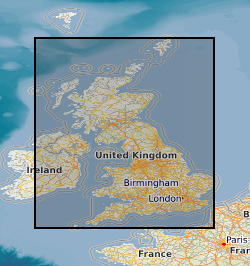
Data identifying landscape areas (shown as polygons) attributed with geological names. The scale of the data is 1:50 000 scale. Onshore coverage is provided for all of England, Wales, Scotland and the Isle of Man. Data are supplied as five themes: bedrock, superficial deposits, mass movement, artificial ground and linear features. Bedrock geology describes the main mass of solid rocks forming the earth's crust. Bedrock is present everywhere, whether exposed at surface in outcrops or concealed beneath superficial deposits or water bodies. Geological names are based on the lithostratigraphic or lithodemic hierarchy. The lithostratigraphic scheme arranges rock bodies into units based on rock-type and geological time of formation. Where rock-types do not fit into the lithostratigraphic scheme, for example intrusive, deformed rocks subjected to heat and pressure resulting in new or changed rock types; then their classification is based on their rock-type or lithological composition. This assesses visible features such as texture, structure, mineralogy. Superficial deposits are younger geological deposits formed during the most recent geological time; the Quaternary. These deposits rest on older rocks or deposits referred to as bedrock. The superficial deposits theme defines landscape areas (shown as polygons) attributed with a geological name and their deposit-type or lithological composition. Mass movement describes areas where deposits have moved down slope under gravity to form landslips. These landslips can affect bedrock, superficial or artificial ground. Mass movement deposits are described in the BGS Rock Classification Scheme Volume 4. However this data also includes foundered strata, where ground has collapsed due to subsidence (this is not described in the Rock Classification Scheme). Caution should be exercised with this data; historically BGS has not always recorded mass movement events and due to the dynamic nature of occurrence significant changes may have occurred since the data was released. Artificial (man-made) theme (shown as polygons) indicates areas where the ground surface has been significantly modified by human activity. Whilst artificial ground may not be considered as part of the 'real geology' of bedrock and superficial deposits it does affect them. Artificial ground impacts on the near surface ground conditions which are important to human activities and economic development. Due to the constantly changing nature of land use and re-use/redevelopment, caution must be exercised when using this data as it represents a snapshot in time rather than an evolving picture hence the data may become dated very rapidly. Linear features (shown as polylines) represent geological structural features e.g. faults, folds or landforms e.g. buried channels, glacial drainage channels at the ground or bedrock surface (beneath superficial deposits). Linear features are associated most closely with the bedrock theme either as an intrinsic part of it for example marine bands or affecting it in the case of faults. Landform elements are associated with both bedrock and superficial deposits. All five data themes are available in vector format (containing the geometry of each feature linked to a database record describing their attributes) as ESRI shapefiles and are available under BGS data licence.
-
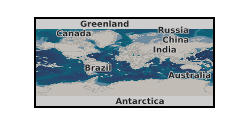
Fault risk remains a key parameter in evaluating the potential for trapping CO2 in the subsurface, yet very little is known about the conditions under which CO2 and CO2/hydrocarbon mixtures are retained by faults. The project will investigate the roles and properties of faults in their capacity to retain CO2. Natural and engineered accumulations of hydrocarbon and CO2-hydrocarbon mixtures will be examined across a wide self-similar province (to minimize geological variability) to develop a knowledge base of fault flow properties. Fault geometries, orientations, seismic attributes, proven vertical trapping and lateral pressure retention values and column-heights will be documented. High-quality data-rich examples will be selected for analysis with established software tools to predict and calibrate CO2 column height and pressure retention. Differences between prediction and observation will be reconciled by checking site-specific geology and optimising the petrophysical property values assigned to the faults, reservoir, seals and fluids (within realistic ranges) to produce an understandable pragmatic and calibrated fit. The fault properties knowledge-base and the newly calibrated tools will be applied to selected key reservoirs from the ETI UK Storage Assessment Project (UKSAP). This will provide improved and evidence-based assessment of storage in regional UK North Sea aquifers such as the Bunter Sandstone, Forties, Tay and Captain. These are some of the largest and promising early developments for storage and are vital to reducing storage costs via multi-user storage. The Bunter Sandstone has 8Gt CO2 unrisked capacity - but only 1Gt may be considered viable because of fault risk. The Captain, Forties and Tay sandstones total 11.5Gt CO2 unrisked capacity, of which only 1Gt may be currently considered viable. The impact of the research will be to upgrade parts of the UKSAP assessment and to assist the development of the large capacity element in these formations that does have perceived fault risk. Grant number: UKCCSRC-C1-14.
-
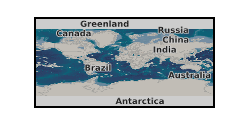
This project will tackle one of the key technical challenges facing the development of commercially viable CO2 transport networks: modelling the phase behaviour of impure carbon dioxide, under the conditions typically found in carbon capture from power stations, and in high-pressure (liquid phase) and low-pressure (gas phase) pipelines. Models for phase behaviour are known as equations of state (EoS). EoS vary in their mathematical form, accuracy, region of validity and computational complexity. Because different applications have different requirements, there is no single EoS that is ideal for all applications. This project will use cutting-edge computer algorithms to automatically reparameterise EoS for CCS modelling. This flexible technique will allow a user to specify their requirements and re-derive model parameters matched to their needs. Our algorithms will directly produce functional forms for EoS from experimental data, thus fully automating the derivation of EoS. This will enable users to rapidly produce bespoke EoS that are tailored to their particular application, and will enable these models to continually evolve as new measurements become available, ensuring that experimental advances are rapidly converted into improved CCS modelling and, ultimately, better performance and efficiency of real CCS processes. Grant number: UKCCSRC-C1-22.
-
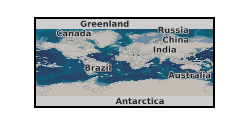
Conventional power generation in the UK faces a significant challenge in the face of decarbonising and maintaining a reliable, secure and cost effective electricity supply. The requirement for fossil-fuel based systems to integrate smoothly with CCS technologies has led to the realistic consideration of oxyfuel based generating plant for CCGT-CCS processes. For CCS to become more technically and economically feasible, it has been suggested that the CO2 scrubbing component of the CCS process will work more effectively if the CO2 concentrations in the exhaust gas were higher. Hence, enhancement of oxygen in the combustion process and the enhancement of CO2 concentration in the plant exhaust via Exhaust Gas Recycling (EGR) can dramatically increase the net efficiency of CO2 scrubbers. Whilst oxyfuel and EGR are known to be potentially very promising technologies for integration with CCGT-CCS processes, there exists a significant lack of fundamental data on the design and reliable operation of industrial burner systems with this technology. Grant number: UKCCSRC-C1-26.
-
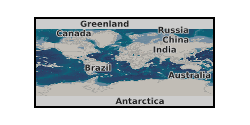
A key element of risk assessment for the geological storage of CO2 offshore is the monitoring of transport of leaks from the subsurface via shallow sediments in the marine environment, including its effect on the ecosystem. In 2012, the NERC-funded QICS project constructed the first marine in situ controlled sub-seabed release facility for CO2 in the world in Ardmucknish Bay, Oban when 4.2 tonnes of CO2 was injected. There is significant international interest in this unique facility and the project provides an opportunity for the UK to consolidate its leadership in environmental monitoring and impact studies for CCS. This scoping project will explore the viability and potential scientific goals for a follow on project, with the capability of delivering useful knowledge at the start of the UK CCS commercialisation program. Grant number: UKCCSRC-C1-31.
-
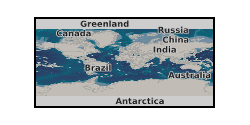
This project will determine the dew point of water, or "water solubility", in impure CO2 mixtures (e.g. containing N2 and H2). At present, key data for defining water levels have not been determined. The data are important because liquid water is highly acidic in the presence of excess CO2; this acidity can be increased by trace amounts of SO2 and H2S and acidity will greatly accelerate corrosion. This research will provide the first accurate data for CO2 transportation systems, which can be used to develop accurate equations of state and define more robust pipeline specifications. These in turn can be applied to inform cost benefit analyses on the additional costs on the pipeline material and construction balanced against the cost of purification and the needs of safety. The research will provide critical physical property data to enable the safe and cost effective transportation of CO2. Grant number: UKCCSRC-C1-21.
 BGS Data Catalogue
BGS Data Catalogue